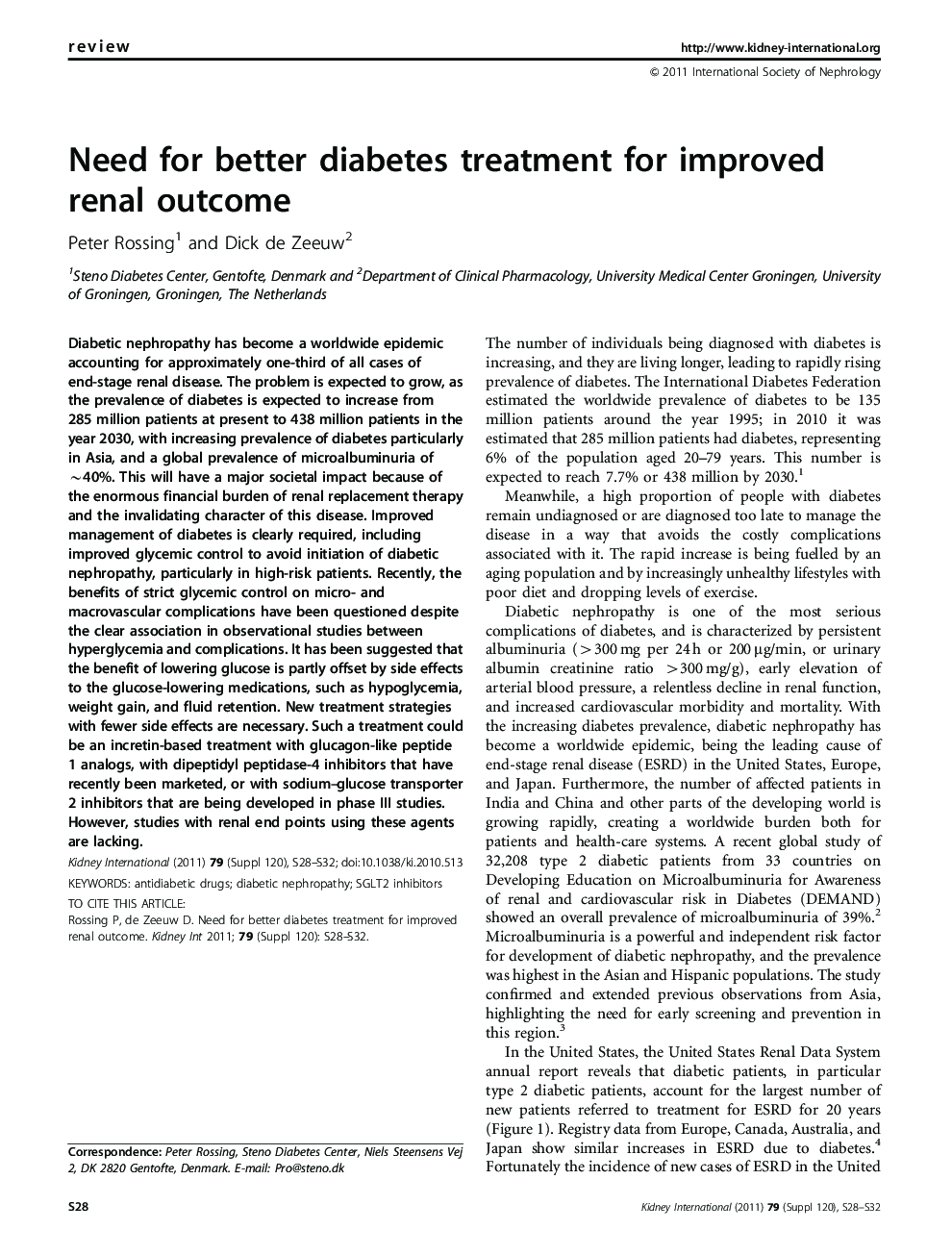| Article ID | Journal | Published Year | Pages | File Type |
|---|---|---|---|---|
| 8773267 | Kidney International | 2011 | 5 Pages |
Abstract
Diabetic nephropathy has become a worldwide epidemic accounting for approximately one-third of all cases of end-stage renal disease. The problem is expected to grow, as the prevalence of diabetes is expected to increase from 285 million patients at present to 438 million patients in the year 2030, with increasing prevalence of diabetes particularly in Asia, and a global prevalence of microalbuminuria of â¼40%. This will have a major societal impact because of the enormous financial burden of renal replacement therapy and the invalidating character of this disease. Improved management of diabetes is clearly required, including improved glycemic control to avoid initiation of diabetic nephropathy, particularly in high-risk patients. Recently, the benefits of strict glycemic control on micro- and macrovascular complications have been questioned despite the clear association in observational studies between hyperglycemia and complications. It has been suggested that the benefit of lowering glucose is partly offset by side effects to the glucose-lowering medications, such as hypoglycemia, weight gain, and fluid retention. New treatment strategies with fewer side effects are necessary. Such a treatment could be an incretin-based treatment with glucagon-like peptide 1 analogs, with dipeptidyl peptidase-4 inhibitors that have recently been marketed, or with sodium-glucose transporter 2 inhibitors that are being developed in phase III studies. However, studies with renal end points using these agents are lacking.
Related Topics
Health Sciences
Medicine and Dentistry
Nephrology
Authors
Peter Rossing, Dick de Zeeuw,
